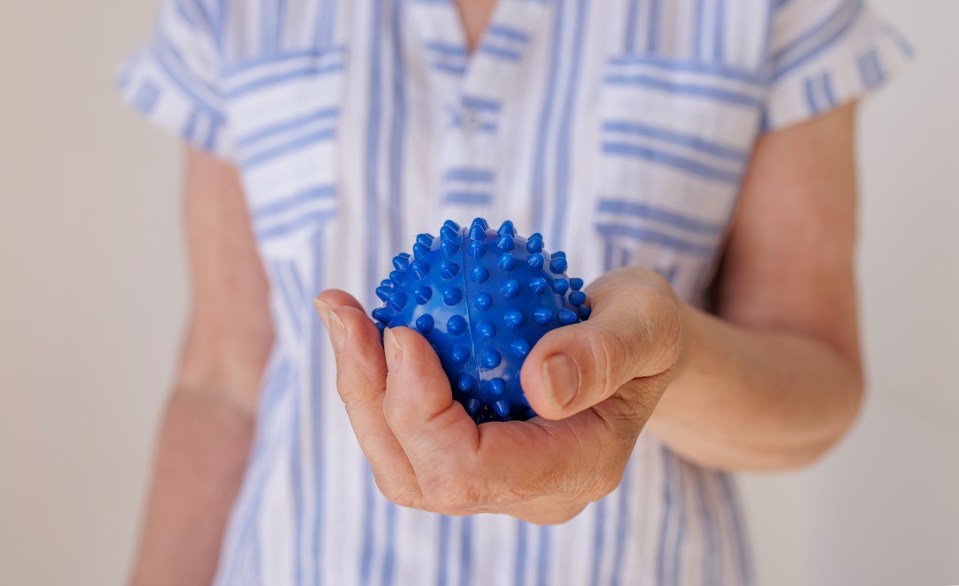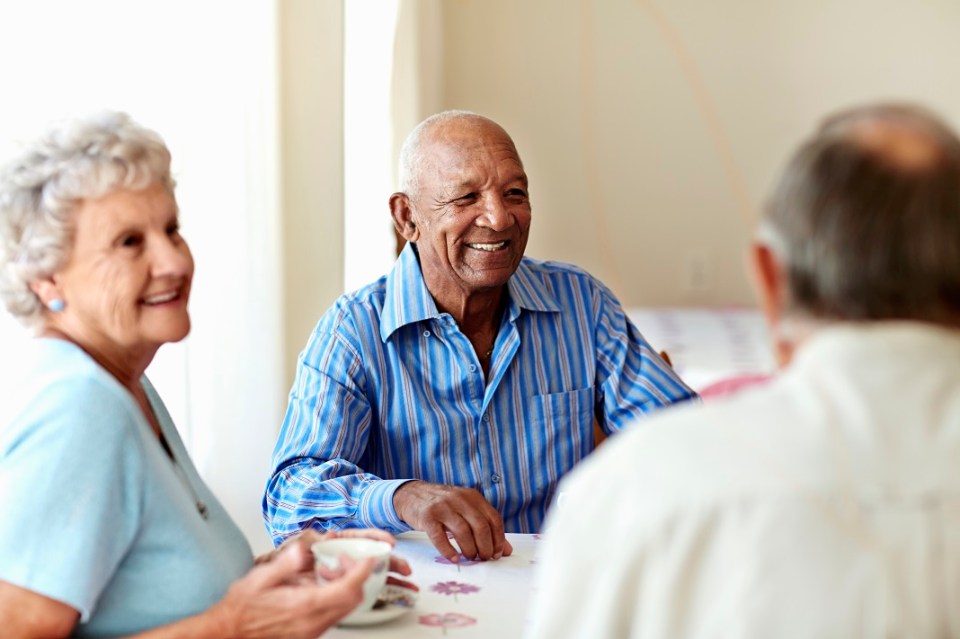Parkinson’s disease is a chronic, slowly progressing neurological condition caused by the lack of dopamine in our bodies. Nerve cells in a part of the brain called the substantia niagra, make and use a brain chemical called dopamine. Dopamine sends messages to other parts of the brain signaling muscles to move smoothly and do what you want them to do. A lack of dopamine leads to impairments that worsen over time. Therapy and exercises for Parkinson’s can help patients improve their symptoms.
Symptoms of Parkinson’s Disease
The early stages of Parkinson’s disease will likely manifest as some combination of the following:
- Reduced facial expression
- Soft or slurred speech
- Lack of arm swing when walking
Over time, more symptoms will develop, including:
- Tremors or trembling of the hands, arms, legs, jaw and face
- Slowed movement, also known as bradykinesia
- Stiffness of muscles in the arms, legs and trunk
- Poor balance
- Difficulty with speech such as mumbling, weak voice, stammering and slurring
Improving Movement with Simulation
The Parkinson’s disease experts at Encompass Health Rehabilitation Hospital of Jonesboro in Arkansas (Kara Norton, occupational therapist; Bethany Moss, physical therapist; and Lisa Hale, speech therapist) shared exercises for Parkinson’s patients that can be done in therapy or prescribed by a clinician to complete at home. “As specialized therapists, we use these exercises to improve our patients’ quality of life, target and reduce symptoms and increase function and mobility,” Norton said.
When practicing these exercises use big, exaggerated motions. This may feel awkward at first, but with practice this method helps Parkinson’s disease patients recalibrate so that big motions begin to feel more normal.

Hand Movements
Daily activities such as zipping or buttoning clothes and picking up objects off the floor are often affected by Parkinson’s disease. This series of hand manipulation exercises for Parkinson’s can be effective at helping patients use their hands to perform daily activities like grooming and dressing.
- Start with a big opening and closing of hands.
- Practice flicking fingers.
- Progressions include moving fingers up and down a pencil and shifting a small ball from the fingertips to the palm and then from the palm to the fingertips.
- Practice picking up small objects from a table, countertop or floor.
Multi-Directional Stepping Exercises
Norton and Moss implement these exercises to help patients improve their initiation of big steps, weight shifting, balance and standing.
- Practice the motion of stepping to the left, and then stepping to the right. You can position your hands on the back of a chair or counter to practice and then try the same steps unassisted if you feel safe doing so.
- Progress to stepping over objects in either a sitting or standing position. Again, Norton emphasizes the importance of using big, exaggerated steps to get the most out of this activity.
- Practice stepping in multiple directions like a clock. This can be done with assistance from a caregiver. The caregiver can call out numbers from a clock (12, three, six and nine). As each number is called, the patient should move their left or right foot to that position using big movements instead of shuffling. This could also be done using colored dots placed on the floor instead of calling out numbers if a visual is helpful.
Sit to Stand
- Begin in a seated position on the edge of a seat or bed with feet apart.
- Next, lean forward. Patients may extend their arms in front of them to promote a forward lean.
- Lastly, using as much effort as you can push with you lower extremities to a standing position.
Supine Trunk Rotation
Moss recommends practicing a supine trunk rotation to simulate getting in and out of bed. “This encourages rolling and initiation of bed mobility for repositioning,” she said. This also helps better perform activities like pulling blankets over the body, transitioning to sitting in the car, fastening a seatbelt and standing to open a refrigerator.
- Begin in a supine position (lying down with your back to the floor and head up).
- Place your arms outstretched wide with your hands open. Knees maybe be flexed or extended depending on what is most comfortable.
- Using as much effort as you can, rotate your upper body and bring one hand over to the opposite hand and then back to starting position. Repeat on each side 10 or more times during each session.
Hula-Hoop Dressing Practice
This exercise for Parkinson’s disease mimics the motion of putting on pants. “Parkinson’s patients do things small, and their feet can get tangled while dressing. This can lead to falling,” Norton said. Like practicing hand movements, safely standing and rotating, this exercise can contribute to more independence in daily activities.
- Place a hula-hoop in front of you. Imagine you are holding out a pair of pants as you would before putting them on.
- Using exaggerated motions, step each leg one at a time inside the hula-hoop.
- After you have stepped both legs inside the hula-hoop, rock to pull the hula-hoop up toward the waist.

Improving Speech
In addition to limiting normal body movements, Parkinson’s disease can also impact speech. Common speech problems include reduced volume (hypophonia), reduced pitch range (monotone) and difficulty with the articulation of sounds or syllables (dysarthria). “These exercises encourage the patient to speak loud and get used to hearing their louder voice while not requiring too much cognitive focus,” Hale said.
Breath Deeply to Warm Up
- Stand or sit up straight and take a deep breath through your nose.
- Inhale as deeply and for as long as you can.
- Exhale slowly through the mouth like you’re blowing out a candle.
- Repeat this exercise several times during the day when you have a spare moment.
Pitch Glides
- Take a deep breath in.
- Say “ah” for 15 seconds or as long as you can as you exhale.
- Repeat the step above using the “oh” sound, then the “oo” and “ee” sounds.
- To progress, practice changing your pitch as you alternate between the “oh, “oo” and “ee” sounds for 30 seconds.
Practice Volume Control
- Take a breath in.
- As you exhale, count to 10 as loud as you can.
- This can be modified by saying days of the week, months of the year or using the alphabet instead of counting.
Practice Speaking and Communication Throughout the Day
Hale encourages her patients to practice speaking exercises while doing regular activities. Suggestions include:
- When riding in a car, read road signs out loud.
- Read out loud instead of reading to yourself.
- To build confidence, exaggerate mouth movements when speaking to friends and family.
- When having conversations practice speaking slowly and in shorter sentences.
- Sing along when listening to music.
- Build in periods of vocal rest during the day to reduce vocal fatigue during important conversations with loved ones.
- Drink plenty of water to reduce hoarseness and vocal strain.
- When carrying on conversations, do what you can to reduce the noise around you. Turn off the television, music or other background noise or move to a quieter space if possible.
- Be sure the person you are speaking to can see your face.
Learn more about our advanced therapies and technologies for Parkinson’s disease treatment
The content of this site is for informational purposes only and should not be taken as professional medical advice. Always seek the advice of your physician or other qualified healthcare provider with any questions you may have regarding any medical conditions or treatments.



